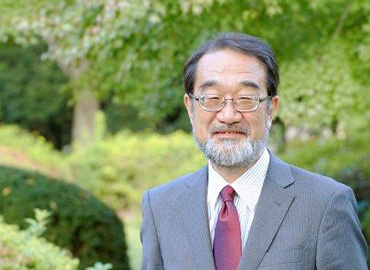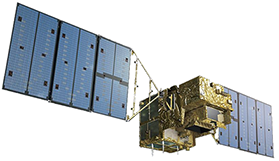[1] Goals of the GOSAT Project
[2] Instruments and Observational Methods
[3] Methods of Analyzing GOSAT Data
[4] Data Processing and Data Product Distribution
[5] GOSAT Data Products
[6] Validation of GOSAT Data Products
[7] Information and RA
[8] Organization and Plans

President's Greeting
The past, present and future of the GOSAT Mission
Former NIES President Akimasa SUMI
(In office: April 1st, 2013 - March 31, 2017)
National Institute for Environmental Studies (NIES) was established in 1974 as the sole institute in Japan for integrated, interdisciplinary research in the broad fields of environmental studies, to provide the scientific and technical basis for the policy-making administration. The issues we face now have transitioned from those of extreme pollution in particular regions, to those of a long-term, anthropogenic, and global nature - such as environmental destruction and contamination, loss of biodiversity, and global warming - caused by exploitation and over-use of natural resources. This situation has made global observation by satellites imperative.
In Japan, the late 90s was a momentous and exciting period for observation by satellites. Satellites such as ADEOS, ADEOS-II, TRMM were developed and put into operation. NIES proposed and realized a sensor to observe stratospheric trace gases such as ozone on ADEOS and ADEOS-II, as well as a subsequent sensor to additionally observe CO2.
In the 2000s, greenhouse gases observation had attracted a growing interest globally, following the adoption of the Kyoto Protocol on emission reduction targets. In this context, JAXA (Japan Aerospace Exploration Agency), MOE (Ministry Of the Environment), and NIES began a new project, namely the GOSAT (“Greenhouse gases Observing SATellite) Project, to respond to the growing necessity for observation.
GOSAT project has a lot of troubles at the early stage. The unsuccessful launch of OCO in the same year also greatly affected the project. One good thing was the engagement of a large number of foreign researchers. However, we had to achieve the same results while maintaining and improving our data processing system. Today, GOSAT team has achieved an optimal level of performance in a context of insufficient research resources, positioning itself as one of the projects of which NIES can be most proud.
GOSAT gives us a lesson on how a satellite mission should be. If you commit to a mission with 100% feasibility at its inception, while its immediate success may be largely certain, in subsequent times it is unlikely to remain in step with the circumstances and expectations of contemporaneous society due to issues of obsolescence. It is thus imperative that a mission be sufficiently ambitious to remain useful to current science, following the launch period, by predicting technological developments and instilling preparedness for the likelihood of technical risks.
Today, GOSAT project is at a stage of expanding its outcomes towards a better human society, maintaining its observational operation and paving the way for the launch of the upcoming successor GOSAT-2.
summer 2015
Privacy Policy | Link | Glossary
Copyright © National Institute for Environmental Studies. All Rights Reserved.















